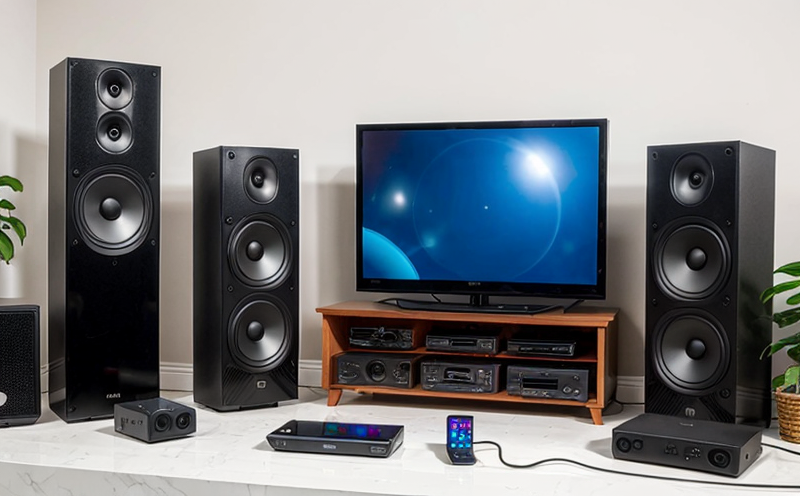RoHS Directive Compliance Testing for Consumer Electronics
The Restriction of Hazardous Substances (RoHS) directive is a key regulation aimed at reducing the environmental impact and health risks associated with hazardous substances in electrical and electronic equipment. For consumer electronics manufacturers, compliance testing under RoHS ensures adherence to these regulations, safeguarding both consumers and the environment.
This service involves rigorous testing of consumer electronics products to ensure they meet the strict requirements set forth by the EU's RoHS Directive. The process encompasses a wide array of tests designed to identify and eliminate hazardous substances such as lead (Pb), mercury (Hg), cadmium (Cd), hexavalent chromium (Cr VI), polybrominated biphenyls (PBBD), and polybrominated diphenyl ethers (PBDE).
The testing methodologies are based on internationally recognized standards, including ISO 16012 for the determination of lead in electronic materials. These tests ensure that all components and substances used in the manufacturing process comply with the specified limits.
A critical aspect of this service involves detailed sample preparation, which includes disassembly, cleaning, and analysis to ensure accurate results. The testing instrumentation includes advanced spectrometers, chromatographs, and other state-of-the-art analytical equipment. Reports generated from these tests are comprehensive and provide a clear overview of the presence or absence of hazardous substances.
Compliance with RoHS is not only about avoiding penalties but also about enhancing brand reputation and gaining market access to regions that strictly adhere to environmental standards. By ensuring compliance, manufacturers can effectively communicate their commitment to sustainability to consumers, thereby building trust and loyalty.
| Test Methodology | Description |
|---|---|
| Inductively Coupled Plasma Mass Spectrometry (ICP-MS) | Used for the accurate quantification of trace elements in electronic materials. |
| Infrared Spectroscopy (IR) | Serves to identify organic compounds and their molecular structure within samples. |
| Gas Chromatography-Mass Spectrometry (GC-MS) | Analyzes volatile organic compounds and other small molecules in electronic components. |
The service also includes a review of the product's bill of materials, which helps to identify potential sources of non-compliance. This proactive approach ensures that any issues are addressed before they lead to non-conformity or recall situations. The comprehensive nature of this testing ensures that products not only meet current regulatory requirements but also anticipate future changes and trends in environmental legislation.
For quality managers, compliance officers, R&D engineers, and procurement teams, ensuring RoHS compliance is a critical task. This service provides the necessary expertise and resources to navigate these complexities effectively. By leveraging this testing service, manufacturers can ensure they are at the forefront of regulatory compliance, maintaining their commitment to sustainability.
International Acceptance and Recognition
The RoHS Directive is widely recognized across Europe and is gradually being adopted in other parts of the world. Compliance with this directive ensures that products can be sold freely within the European Union (EU) and opens doors to international markets that adopt similar regulations.
In addition to EU member states, countries such as China, Japan, South Korea, and others have implemented their own versions of the RoHS Directive or have similar restrictions on hazardous substances in electronics. By ensuring compliance with these standards, manufacturers can expand their market reach significantly.
The international acceptance of RoHS-compliant products not only enhances market access but also strengthens brand reputation. Consumers are increasingly conscious about the environmental impact of the products they purchase, and compliance with RoHS is seen as a positive attribute by many consumers. This can lead to increased sales and customer satisfaction.
Furthermore, complying with RoHS standards sets manufacturers apart from competitors who may not adhere to these regulations. This competitive edge helps in maintaining market share and achieving higher profit margins. The service provided ensures that all testing aligns with the latest international standards and guidelines, making products internationally acceptable and recognized.
Competitive Advantage and Market Impact
- Increased market access: Compliance with RoHS ensures that products can be sold in the EU and other markets that have similar regulations.
- Better brand reputation: Consumers are more likely to trust brands that demonstrate a commitment to environmental sustainability.
- Competitive edge: By being ahead of regulatory changes, manufacturers can maintain their competitive edge in the market.
- Potential for higher profit margins: Compliance with RoHS can lead to increased sales and customer loyalty, resulting in higher profit margins.
The service provided offers a significant competitive advantage by ensuring that products meet or exceed the latest regulatory requirements. This proactive approach not only helps manufacturers stay ahead of potential regulatory changes but also enhances their market position and reputation.
Use Cases and Application Examples
The RoHS Directive Compliance Testing service is applicable to a wide range of consumer electronics, including smartphones, tablets, laptops, televisions, home audio systems, and gaming consoles. Below are some specific use cases:
| Product Category | Description |
|---|---|
| Smartphones | Testing for lead in the display glass or solder joints. |
| Laptops | Ensuring that the battery does not contain cadmium. |
| Televisions | Verifying the absence of hexavalent chromium in the coating layers. |
| Home Audio Systems | Checking for polybrominated biphenyls (PBBD) and polybrominated diphenyl ethers (PBDE) in fire retardants used. |
The service is also useful for manufacturers who are developing new products or redesigning existing ones. By conducting comprehensive testing, they can ensure that their products meet the latest regulatory requirements and remain competitive in the market.





